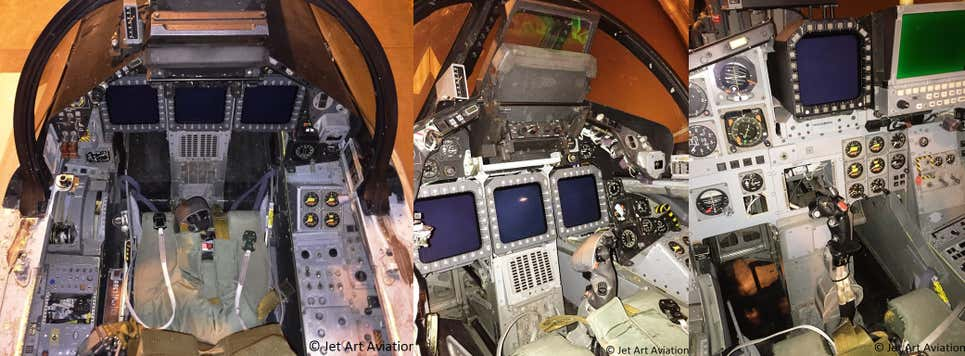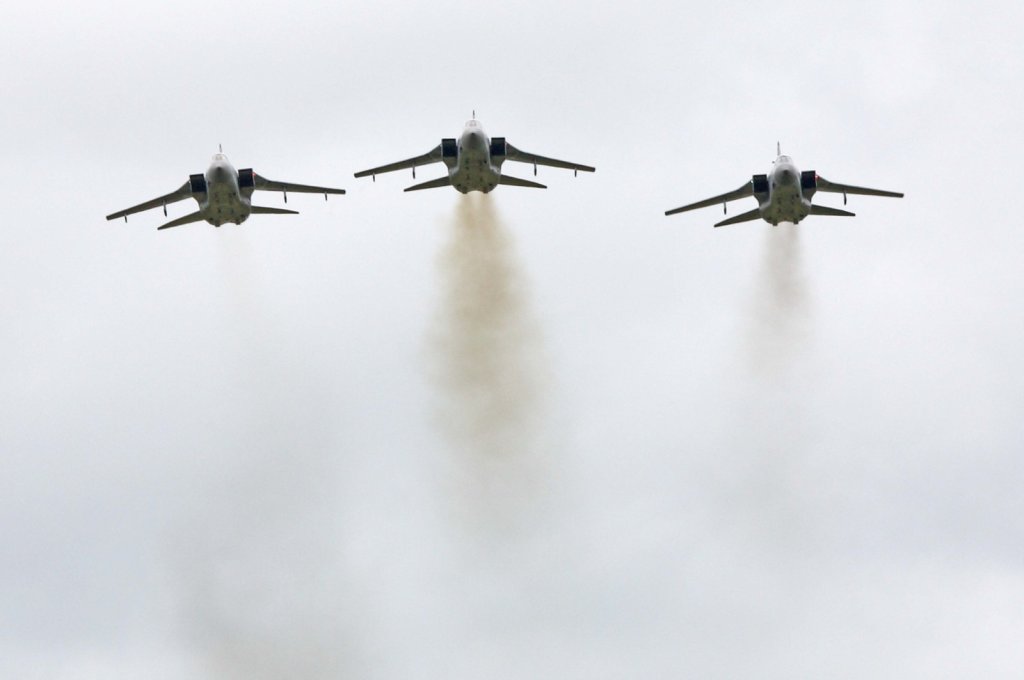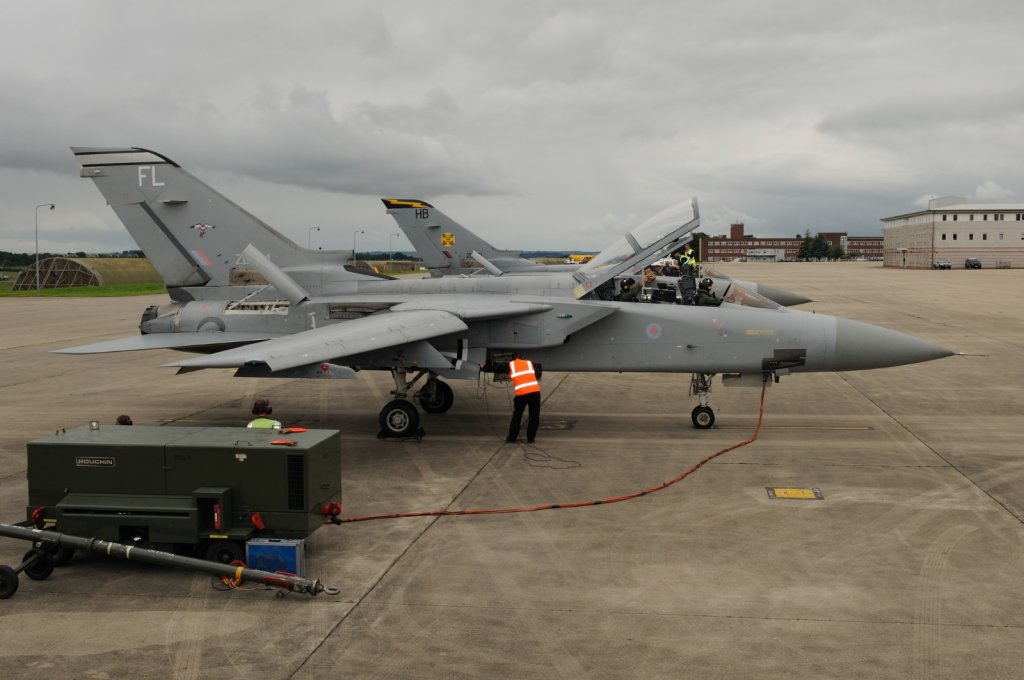Jared Isaacman, former CEO of the red air provider Draken International, tech billionaire, astronaut, and the operator of a pristine MiG-29 Fulcrum personal jet that once belonged to Paul Allen, has added another Cold War-era fighter to his collection. The Panavia Tornado F2 interceptor — none of which are flying anywhere in the world — is planned to be bought back to airworthy condition in “a year,” Isaacman says. Very likely, it will be the most advanced private fighter in personal hands ever.
On X today, Isaacman posted photos showing the arrival of the rare jet in the United States. The first image shows the aircraft, still wrapped in a protective plastic coating, on the rear of a flatbed truck. Next, it is seen in a hangar, sitting on its landing gear but with its wings and tails yet to be reattached.
“The next aviation project has arrived in the hangar,” Isaacman wrote. “The Tornado F2. She can fly low and very fast with a variable-sweep wing. I imagine it will take a year, but she will fly again.”
The precise origins of this Tornado are unclear, but Isaacman describes it as having an “amazing history as a test platform,” as a result of which it has very low flying hours on the airframe.
The obvious candidate is serial ZD902, the Tornado F2A test platform that was last operated by QinetiQ, the U.K.-based defense technology company that works closely with the U.K. Ministry of Defense, especially on experimental projects and novel technologies.

This unique aircraft was known as the Tornado Integrated Avionics Research Aircraft (TIARA) and finally ceased operations in late 2011. It was used for tests of various advanced air combat technologies, including infrared search and track sensors, helmet-mounted displays, sensor fusion, drone control, and others.
The aircraft also flew a highly unusual sortie alongside a British Airways Concorde supersonic transport, documented in the photos below:
When serial ZD902 was first offered for sale, back in 2016, Tyler Rogoway of TWZ wrote at the time:
“…this particular jet flew as a testbed for a variety of sub-systems and Tornado upgrades, it has very low hours and has been babied its whole life. In fact, the jet never even clocked up 1,000 flight hours. Metaphorically, it’s like a used car with 10,000 miles on it.”
You can read all about this aircraft here and a photo of it during its early service is seen below.
Just the process of getting this aircraft from its previous home in storage in the United Kingdom to its new home in the United States is a very significant endeavor.
The Tornado F2 was the first iteration of the interceptor version of the Tornado, best known in its strike/reconnaissance form, which is still operated by Germany, Italy, and Saudi Arabia.
The Tornado Air Defense Variant (ADV) was developed specifically for the U.K. Royal Air Force, primarily as a long-range bomber destroyer, to protect the British Isles against Soviet bombers and their cruise missiles. Compared to the strike/reconnaissance jet, the ADV had a 14-inch fuselage stretch and improved RB.199 engines.
The Tornado F2, of which only 18 were ever built, was the initial production version of the ADV for the Royal Air Force, and these began to be delivered in 1984, being used for training aircrew on what was, for its time, a state-of-the-art interceptor.

The full-production Tornado F3 was the definitive interceptor, with a Foxhunter radar that was initially used in conjunction with four medium-range Skyflash and four short-range AIM-9 Sidewinders, which were later superseded by AMRAAMs and ASRAAMs. The aircraft was also armed with a 27mm cannon with 180 rounds and external fuel tanks were carried on swiveling wing pylons.
Export versions of the Tornado F3 served with Italy (briefly, on loan from the Royal Air Force) and Saudi Arabia, but the British and Saudi examples were stood down in 2011, and both of those fleets were replaced by Eurofighter Typhoons.

In all, 218 examples of the Tornado were built.
Very clearly, despite its relative age, the Tornado ADV is an extremely potent piece of equipment to be operated in private hands — the fact that its closely related Tornado IDS cousin remains in frontline service today speaks to its overall capabilities.
Once Isaacman’s F2A is up and running, he will have in his care a swing-wing fighter that can reach a speed of Mach 2.2 and pull 7.5Gs.
Maneuverability was never the Tornado’s strong point, with its air defense mission instead relying on a powerful radar (not fitted in Isaacman’s jet), long range, and fairly efficient supersonic ‘dash’ performance thanks to its swing-wing design.

The Tornado F2A is also fitted with full flying controls in both the front and rear cockpits, which are shown in the photos below. When first offered for sale, ZD902 was described as having a unique cockpit modified with multifunction display screens and a prototype holographic head-up display, although it’s not clear if these are going to be retained.

It will make a very interesting companion piece to Isaacman’s two-seat Soviet-made MiG-29UB combat trainer, acquired from the estate of the late Paul Allen and regularly flown since then.
While of broadly similar vintage, the Tornado ADV is arguably a more potent beyond-visual-range fighter, at least in its later years of service, when the refined F3 was considered among the most capable interceptors anywhere in the world. By this stage, it boasted a Joint Tactical Information Distribution System (JTIDS) datalink, secure radios, advanced electronic warfare equipment including a towed radar decoy, and more.
Obviously, buying a potentially airworthy Tornado of any kind is pretty much a once-in-a-lifetime opportunity. Its excellent condition is reflected in Isaacman’s goal of getting it back into the air in the space of around a year.
That is a very exciting prospect, with the Tornado always having been a fairly spectacular airshow performer. The chance to see one of these jets being put through its paces in private hands is even more remarkable. As Tyler wrote back in 2016:
“If nothing else, it sure beats the hell out of pretty much anything else flying in private hands, and especially anything that has an origin in the western hemisphere. What’s even better is that it actually has a useful range and those signature Tornado thrust reversers for landing at shorter fields. So come on, piss off the population surrounding an airfield near you, and buy this wonderful wedge-shaped flying machine!”
Still, receiving parts and support for the aircraft will be a challenge, and just filling it up with internal fuel, even without drop tanks, will run you a small fortune — roughly $11,500 based on current Jet-A prices. But considering Isaacman started his own aerobatic team and then adversary squadron, I don’t think sticker shock will be an issue.
Update, July 2: In a follow-up post on X today, Jared Isaacman confirmed that the Tornado is the unique F2A TIARA aircraft, as we had suspected. Isaacman says the jet will be used to “honor the heritage with a historic RAF paint scheme.” The photo again confirms just how well-preserved the Tornado is, looking fairly immaculate considering it has sat in a hangar for 13 years. Now we can also see the famous big tailfin, wings, and the huge ‘Hindenburger’ underwing fuel tanks, each of which can accommodate nearly 600 U.S. gallons.
TWZ contributor Jamie Hunter also provided us with these rare photos showing what is, for now, the very last flight by any Tornado ADV versions when three F3s — which had been used for trials of the Meteor beyond-visual-range air-to-air missile — made a final ferry flight to RAF Leeming in the summer of 2012.



Contact the author: thomas@thewarzone.com
